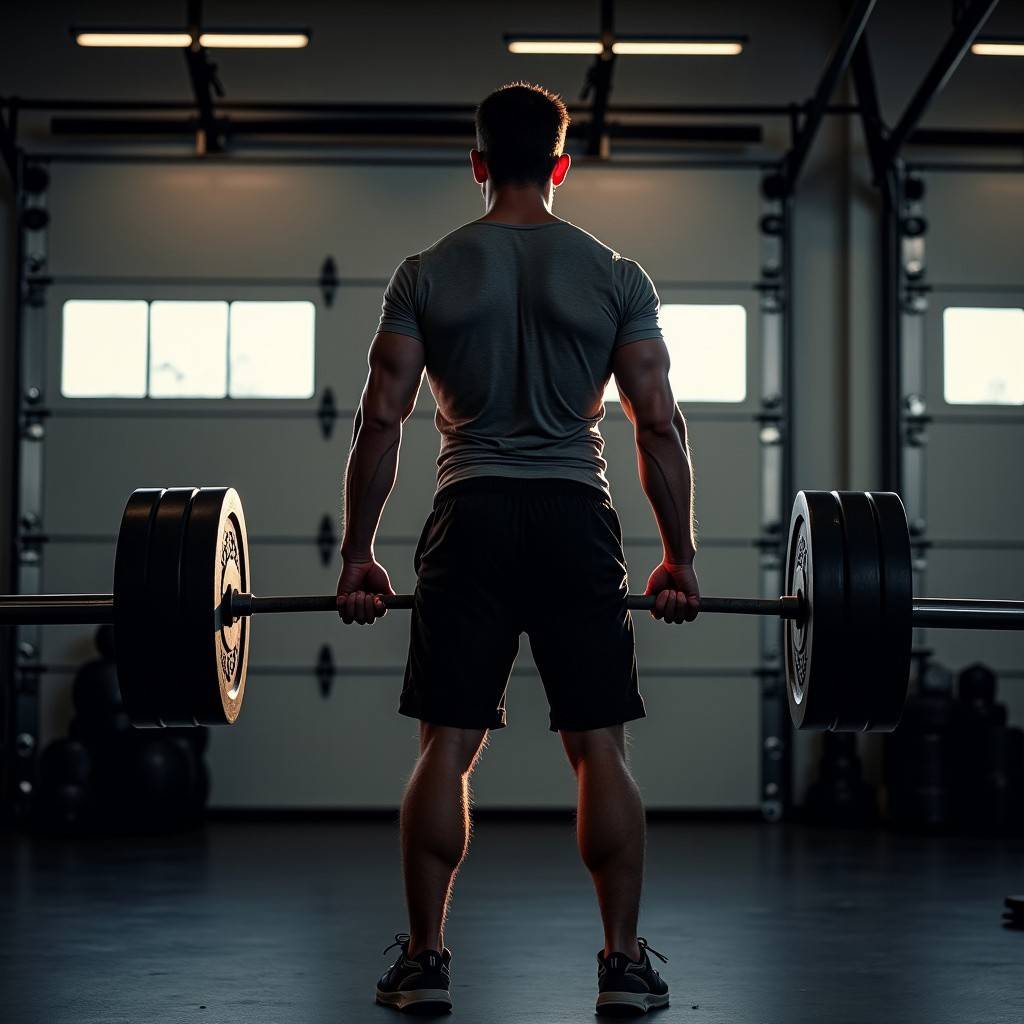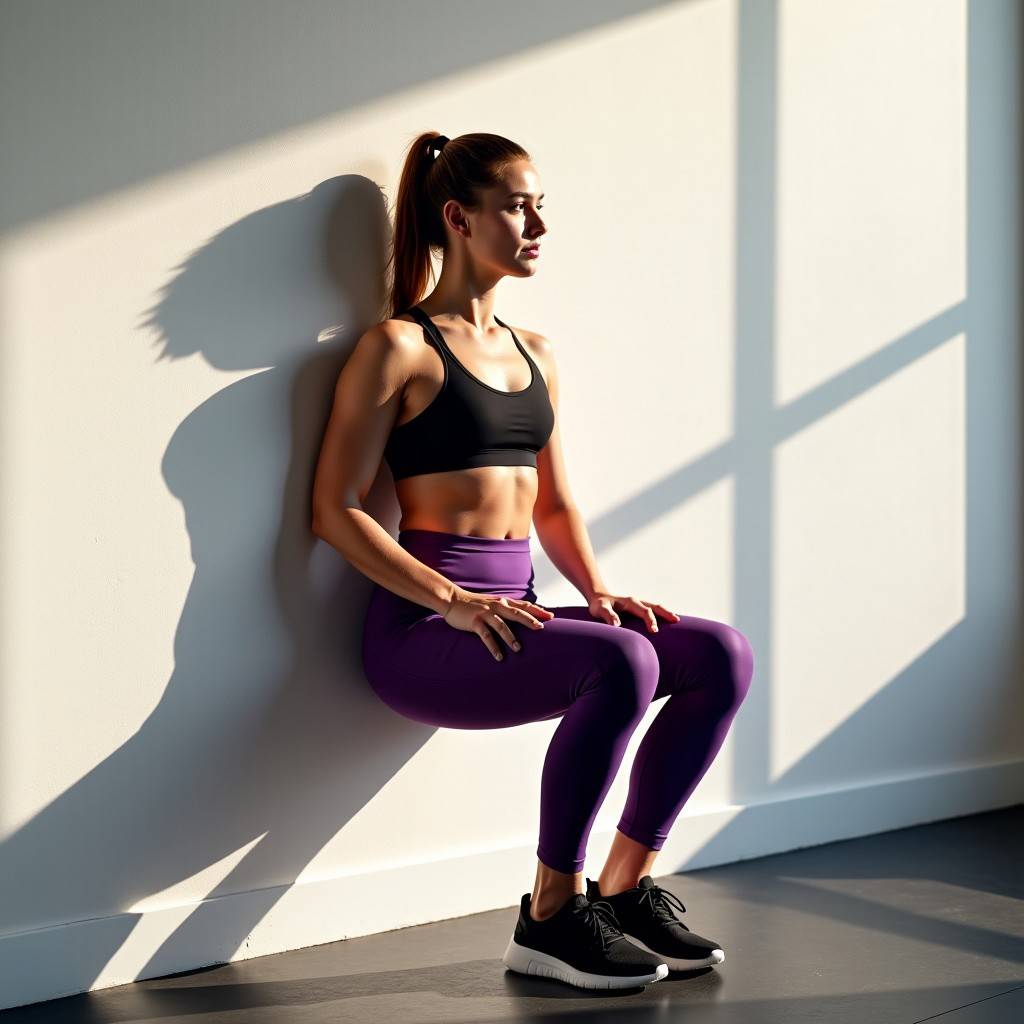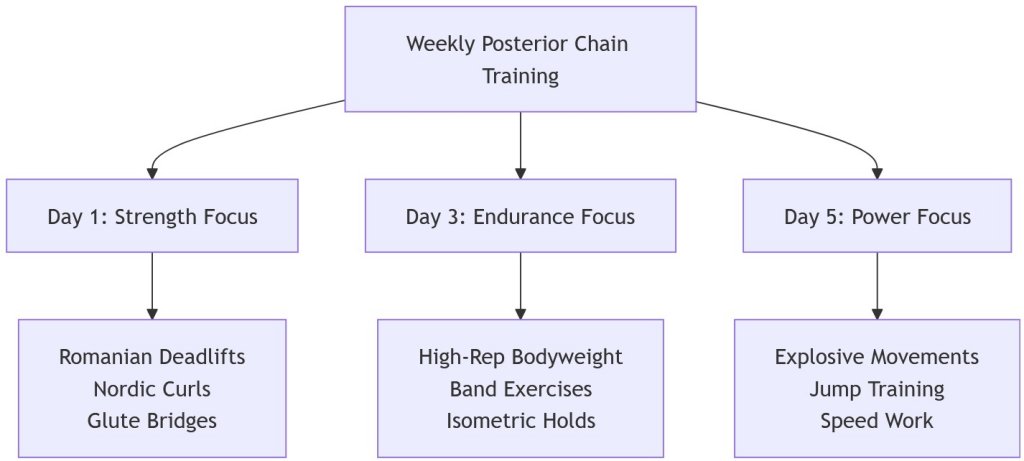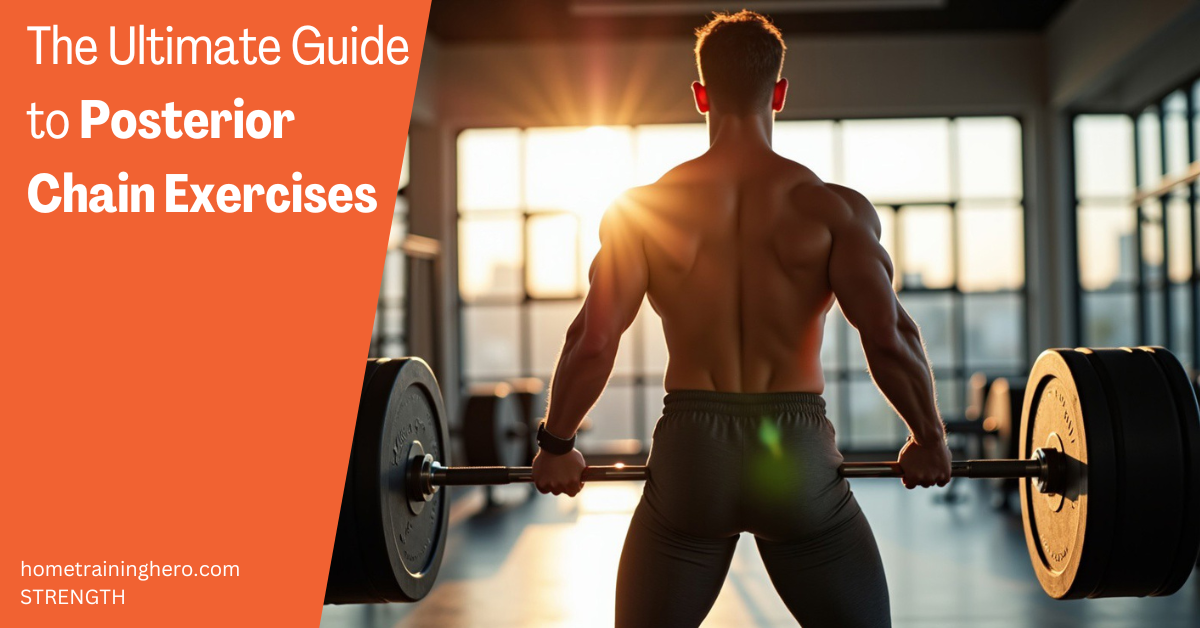Are you experiencing lower back pain, poor posture, or feeling like your athletic performance has hit a plateau?
The secret to overcoming these challenges might lie in an often-overlooked group of muscles: your posterior chain.
As a fitness trainer with over a decade of experience, I’ve seen countless clients transform their strength, posture, and overall performance by focusing on these crucial muscles.
- Amazon Kindle Edition
- Schniederjan, Sean (Author)
- English (Publication Language)
Contents
What Is the Posterior Chain?
Let me link to your informative article about this topic: The posterior chain comprises the powerful muscles along the back of your body, including your:
- Calves
- Hamstrings
- Glutes
- Lower back muscles (erector spinae)
- Upper back muscles
- Rear shoulders
Think of your posterior chain as the powerhouse that drives human movement. Whether you’re picking up groceries, playing with your kids, or training for a marathon, these muscles work together to keep you moving efficiently and safely.
Why Posterior Chain Exercises Matter
The importance of posterior chain exercises cannot be overstated. Here’s why you should prioritize them:
- Enhanced Athletic Performance: Strong posterior chain muscles improve your speed, jumping ability, and overall power output.
- Better Posture: In our desk-bound world, these exercises counteract the effects of prolonged sitting.
- Reduced Injury Risk: A strong posterior chain provides stability and support for your spine and joints.
- Improved Daily Function: These muscles help with everyday activities like bending, lifting, and climbing stairs.
Top Posterior Chain Exercises You Can Do at Home
Let’s dive into the most effective exercises you can perform with minimal equipment. I’ve organized these by difficulty level to help you progress safely.
Beginner-Friendly Movements

- Glute Bridges
- Lie on your back, knees bent
- Push through your heels to lift your hips
- Hold for 2-3 seconds at the top
- Sets: 3, Reps: 15-20
- Bird Dogs
- Start on hands and knees
- Extend opposite arm and leg
- Maintain a neutral spine
- Sets: 3, Reps: 10 per side
- Standing Hip Extensions
- Stand tall, holding onto a chair for balance
- Kick one leg back while keeping it straight
- Focus on squeezing the glute
- Sets: 3, Reps: 12-15 per side
- Superman Holds
- Lie face down on the floor
- Lift arms and legs off the ground
- Hold for 10-15 seconds
- Sets: 3, Reps: 8-10
- Wall Sits
- Lean against a wall, sliding down until thighs are parallel to ground
- Keep feet shoulder-width apart
- Hold position for 30-60 seconds
- Sets: 3-4
For more beginner options, explore these easy exercises for building glutes
Intermediate Movements

- Romanian Deadlifts with Resistance Bands
- Stand on the band’s center
- Hinge at hips while maintaining a flat back
- Feel the stretch in hamstrings
- Sets: 4, Reps: 12-15
- Single-Leg Glute Bridges
- Like regular glute bridges but with one leg extended
- Keep hips level throughout movement
- Squeeze glute at top
- Sets: 3, Reps: 12 per side
- Resistance Band Good Mornings
- Stand on band and loop it behind neck
- Hinge at hips with soft knees
- Keep back straight throughout
- Sets: 3, Reps: 15
- Banded Hip Thrusts
- Position upper back on edge of couch/bench
- Place band across hips
- Drive hips up powerfully
- Sets: 4, Reps: 12-15
- Sliding Leg Curls
- Lie on back, heels on towels/sliders
- Bridge hips up
- Curl heels toward glutes
- Sets: 3, Reps: 12
Learn more about resistance band leg exercises
Advanced Movements

- Nordic Hamstring Curls
- Use a Nordic hamstring curl strap
- Lower yourself slowly
- Focus on eccentric control
- Sets: 3, Reps: 6-8
- Single-Leg Romanian Deadlifts
- Stand on one leg with band under standing foot
- Hinge forward while lifting back leg
- Maintain neutral spine
- Sets: 3, Reps: 10 per side
- Glute-Ham Raises
- Use a glute-ham roller
- Lower chest toward ground
- Curl back up using hamstrings
- Sets: 3, Reps: 8-10
- Banded Back Extensions
- Lie face down on stability ball
- Loop band around upper back
- Extend spine against resistance
- Sets: 3, Reps: 12-15
- Single-Leg Hip Thrusts
- Set up as regular hip thrust
- Extend one leg
- Drive through heel of working leg
- Sets: 4, Reps: 10 per side
- Stability Ball Leg Curls
- Bridge position with heels on ball
- Curl ball toward glutes
- Keep hips elevated throughout
- Sets: 3, Reps: 15
For advanced glute development, check out our guide to the best glute exercises for mass
Plyometric Posterior Chain Exercises
- Broad Jumps
- Start in athletic stance
- Jump forward as far as possible
- Land softly
- Sets: 3, Reps: 8
- Jumping Lunges
- Alternating split jumps
- Focus on posterior chain drive
- Land quietly
- Sets: 3, Reps: 10 per side
- Hip Bridge Bounces
- Bridge position
- Small, rapid hip bounces
- Maintain tension throughout
- Sets: 3, Reps: 20
Remember to:
- Start with beginner exercises and progress gradually
- Master form before increasing intensity
- Use proper resistance band techniques
- Allow adequate recovery between sessions
For optimal results, combine these exercises into a structured program using our progressive overload principle guide. Also, consider investing in quality equipment for posterior chain strengthening to maximize your training effectiveness.
Creating Your Posterior Chain Workout Plan
Here’s a simple yet effective weekly plan:

Equipment Recommendations
To maximize your posterior chain training at home, consider investing in quality equipment. Our comprehensive guide to the best exercise equipment for posterior chain strengthening provides detailed recommendations based on your specific needs and goals.
Common Mistakes to Avoid
- Neglecting Proper Form: Quality over quantity is crucial for posterior chain exercises
- Skipping Warm-ups: Always prepare these muscles for work
- Inconsistent Training: Regular practice yields the best results
FAQ
Q: How often should I train my posterior chain? A: Aim for 2-3 dedicated sessions per week, allowing 48 hours between workouts for recovery. However, if you’re just starting out, begin with twice a week to allow your body to adapt to the new movement patterns.
Q: Can I build a strong posterior chain without weights? A: Yes! Resistance bands can be just as effective as weights when used correctly. Many bodyweight exercises like glute bridges, bird dogs, and Nordic curls can effectively target these muscles.
Q: I have lower back pain. Should I still do posterior chain exercises? A: While posterior chain exercises can help alleviate back pain, it’s important to start gently and progress gradually. Check out our guide to lower back pain exercises for safe options, and always consult with a healthcare provider before starting a new exercise routine if you have existing pain.
Q: How long before I see results from posterior chain training? A: With consistent training, you might notice improvements in strength and posture within 4-6 weeks. However, visible muscle changes typically take 8-12 weeks of regular training combined with proper nutrition. Remember, if you’re not seeing results from working out, you might need to adjust your approach.
Q: Can I train my posterior chain if I’m overweight or a beginner? A: Absolutely! Start with workouts for obese beginners at home that include modified versions of posterior chain exercises. Focus on proper form and gradually increase intensity as you build strength and confidence.
Q: Should I feel sore after posterior chain exercises? A: Some muscle soreness is normal, especially when starting a new routine. However, understanding whether muscle pain after workout is good or bad can help you determine if you’re training at the right intensity.
Q: What’s the best time of day to do posterior chain exercises? A: The best time is when you can consistently commit to training. Some people prefer morning workouts for energy and metabolism benefits, while others find evening training has its own advantages. Choose a time that fits your schedule and energy levels.
Q: Can posterior chain exercises help with knee pain? A: Yes, strengthening your posterior chain can help reduce knee pain by improving muscle balance and joint stability. Try these knee-friendly exercises to get started.
Q: What equipment gives the best bang for buck for posterior chain training? A: A quality set of resistance bands and a stability ball offer excellent value for posterior chain training. For more options, check our guide to the best exercise equipment for posterior chain strengthening.
Q: How do I know if I’m engaging my posterior chain correctly? A: You should feel the muscles along the back of your body working during exercises. Focus on squeezing your glutes and maintaining a neutral spine. If you’re unsure, consider working with a trainer initially or filming yourself to check your form.
Ready to Transform Your Posterior Chain?
Don’t let a weak posterior chain hold you back from achieving your fitness goals. Start implementing these exercises today, and remember to check out our complete guide to posterior chain strengthening equipment to take your training to the next level.
Remember, consistency is key. Start with the basics, focus on form, and progressively challenge yourself. Your body will thank you with improved performance, better posture, and reduced risk of injury.


